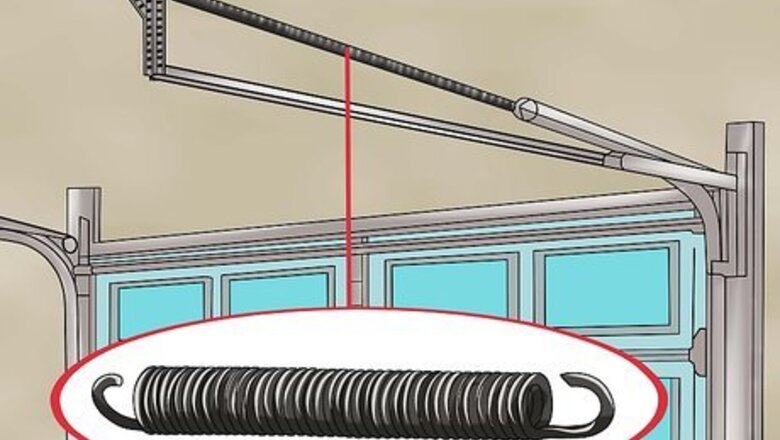
views
X
Expert Source
Barry ZakarHandyman
Expert Interview. 20 August 2020.
Preparing for Adjustment

Recognize side-mounted extension springs. There are two kinds of springs your garage door might use: side-mounted extension springs or torsion springs. Before you can adjust the spring on your garage door, you must determine what kind of springs your door has. Side-mounted springs are easier to adjust, while torsion springs are more dangerous to meddle with, so you would be better off calling a professional if you have these. Side-mounted extension springs run above and parallel to the door track, and they'll have an attached pulley and cable. The cable, which holds the spring, attaches to hooks in the track hanger assembly. There will be two springs: one above each track on either side of the garage door.
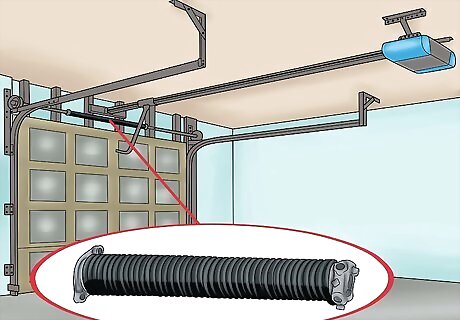
Recognize torsion springs. Torsion springs are mounted above the door and will run along a metal shaft that's parallel with the top of the door. This type of mechanism is usually used for doors that are over 10 feet wide. Lighter and smaller doors may only have a single torsion spring, while larger and heavier doors may have two springs, with one located on either side of the central plate.
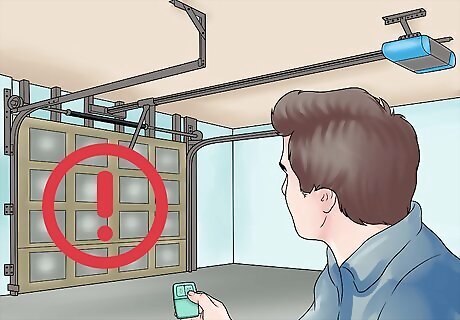
Understand the problem. Improper spring tension can cause many problems with how your garage door opens and closes. The problem you're having will help you figure out how you need to adjust the spring to fix the door. Doors that need spring adjustments may: Be difficult to open or close Open or close too quickly Not close fully or properly Close unevenly and leave a gap.
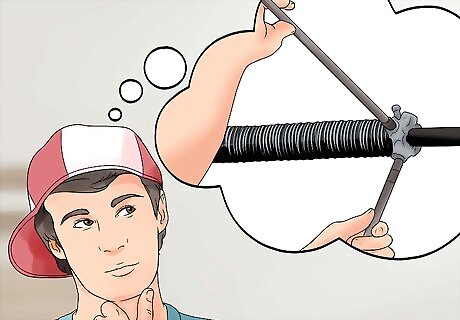
Determine your solution. Depending on your problem, you will either need to increase or decrease the spring tension on the door. You will need to: Decrease the tension if your door isn't closing fully, is difficult to close, or opens too quickly. Increase the tension if the door is difficult to open or closes too quickly. Adjust the tension on one side (where the gap is) if your door is closing evenly.
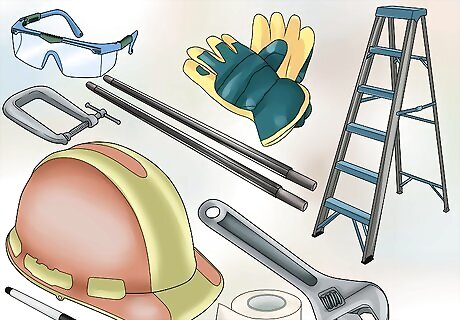
Assemble your tools. There are some basic tools and safety equipment you'll need for this job. Your safety equipment includes gloves, safety glasses, and a hard hat. Your other tools are a sturdy ladder, a C-clamp, an adjustable wrench, and a marker or masking tape. If you are going to be adjusting torsion springs, you will also need two winding bars or solid steel rods. The rods or bars should be 18 to 24 inches (45.7 to 61 cm) in length. Solid steel bars can be purchased at hardware stores. You will need to measure the diameter of the holes in the winding cone (the collar that secures the spring to the metal shaft) to determine what size bar or rod to use. Most cones have a hole diameter of 1/2 inch. Do not attempt to use any sort of tool as a substitute for the winding bars or steel rods.
Side-Mounted Springs
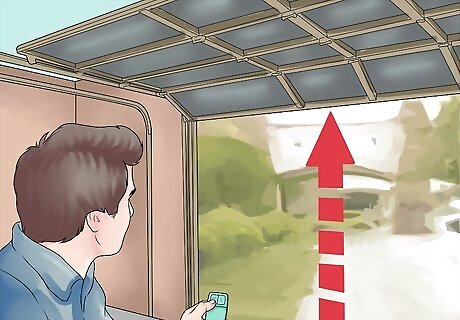
Open your garage door fully. Before you can work, you need to release the tension on the springs. Open the door until it hits the stop bolt and can't go any farther. For an automatic door: Open the door, unplug the opener, and disconnect the door from the opener by pulling the emergency release cord down and back until the spring locks in the open position. You will then be able to open the door fully and release the tension on the springs.
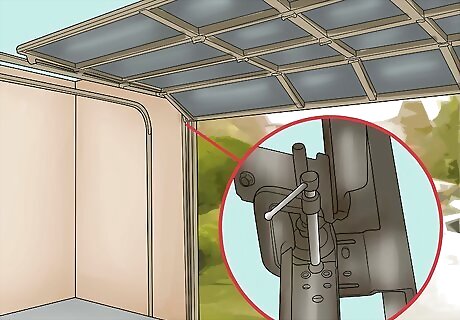
Secure the door in place. Place a C-clamp below the bottom roller, or use two locking pliers (one on each track under the bottom rollers). This will ensure the door doesn't fall while you are working.
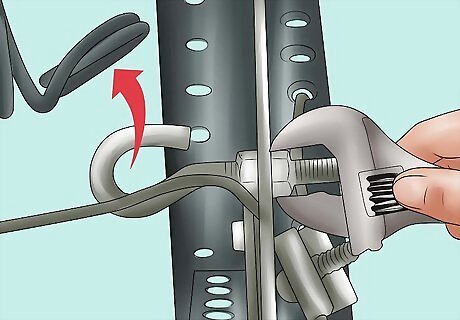
Remove the spring hook. The spring will be attached to the track hanger by a large hook that's kept in place with a nut. Once there's no more tension on the spring, remove it from the track hanger. Use the adjustable wrench to remove the nut on the back side of the bracket. You'll now be able to move the hook to a lower or higher hole to decrease or increase the tension.
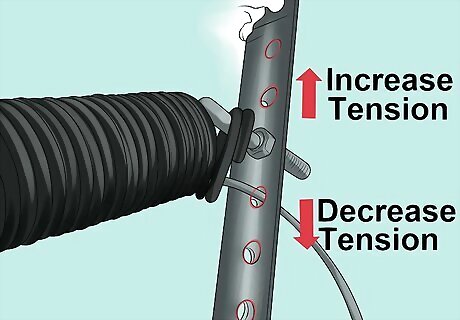
Adjust the tension. To make sure you achieve the right tension, adjust the spring by one hole at a time. Adjust both springs equally, one at a time, if your door was balanced. Once you've moved the hook to its new location, replace the nut on the back and use the wrench to tighten the hook into place. To decrease tension and fix a door that isn't closing fully, is difficult to close, or opens too quickly, hook the spring onto a lower hole on the track hanger. This reduces the length of the spring and the tension on it. To increase tension and fix a door that is difficult to open or closes too quickly, hook the spring onto a higher hole on the track hanger. This stretches the spring and increases the tension on it. To adjust tension on one side and correct a door that wasn't closing evenly, adjust the spring only on the side where the gap was. Decrease the tension on that side by hooking the spring onto a lower hole on the track hanger.
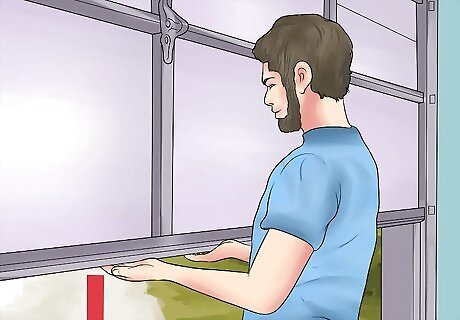
Test your door for functionality and balance. After adjusting your spring(s) by one hole, unclamp the door and test the springs by lowering the door to see how it feels. Make another single-hole adjustment if your door is still closing too quickly, slowly, or unevenly (with gaps). Repeat steps one to five until your door is closing properly and evenly, or until your gap is gone. Overcome tension troubles through carefully unwinding. "I was having the hardest time closing my heavy wooden garage door. It would get stuck halfway down. This article was a lifesaver. It walked me through how to safely release the tension on the torsion spring and unwind it bit by bit. I was scared to mess with it at first, but the steps were so clear even I could follow them. Now my door glides up and down just right." - Johnny J. Balance uneven doors by adjusting side springs individually. "I could never get my garage door to close all the way. It always had a gap on one side, which drove me nuts. The article explained how to tweak the extension springs on each side separately. I was amazed that I could customize each spring's tension. I decreased the tension a tad on the one side, and voila — no more gap! My door finally closes evenly." - Ron G. Replace spring hooks effortlessly by following the illustrated steps. "I about had a heart attack when one of the spring hooks on my garage door busted off. Just looking at that heavy spring gave me the creeps. But the article had photos for every step in replacing the hook. I studied them closely and took my time. I couldn't believe I got the new hook on there myself in less than an hour. Those pictures were worth a thousand words." - John H. Achieve smooth operation through gradual tweaking. "My garage door was always too heavy to open. And then, once I got it open, it would slam down quickly. This article suggested making teeny changes to the tension, like moving the spring hooks down just one hole at a time. I kept testing the door in between adjustments. It took some patience, but working gradually let me get it adjusted just right. Now it opens smooth as butter and closes nice and slow." - Troy T. Did you know that wikiHow has collected over 365,000 reader stories since it started in 2005? We’d love to hear from you! Share your story here.
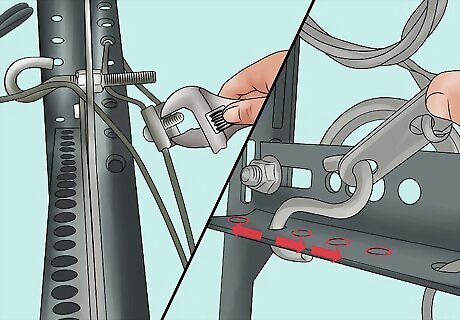
Adjust the cable to make minor tension adjustments. The cable inside the spring will also be attached to a hook or the track, and you can adjust this by tightening or loosening the knot or the clamp attaching it and tweaking the length of the cable. Shorten the cable to slightly increase the tension, or lengthen it to slightly decrease the tension. Your cable may be attached to the track by an S-hook, and if that's the case, move the hook to a higher hole to increase tension slightly or to a lower hole to decrease tension slightly.
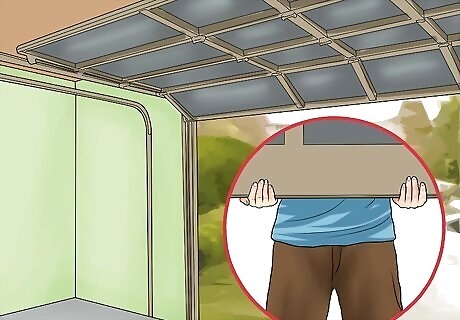
Test the door. Determine if your door is opening and closing the way you would like, and ensure it's balanced (closes evenly and without gaps). Continue making minor adjustments with the cable and testing the door until it's correct. When you have finished with your adjustments, be sure to remove anything that was securing the door in place, pull on the emergency cord to release the spring and reattach the door to the opener, and plug in your automatic door opener.
Torsion Springs
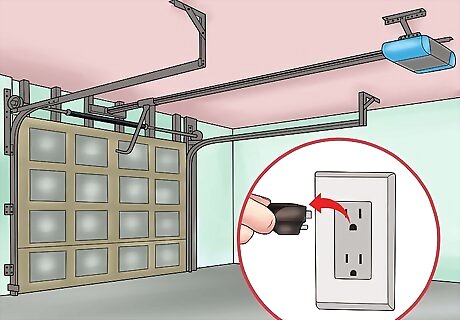
Close the garage door. Unplug the opener if you have an automatic garage door. Note that because the garage door will be down, this will mean: The springs will be under tension, which increases the risk of injury. Call a professional if you don't feel confident dealing with a spring under this much tension. You should have sufficient lighting in the garage to work comfortably. You will need an alternate way out if anything should happen. All your tools need to be inside the garage with you when you begin.
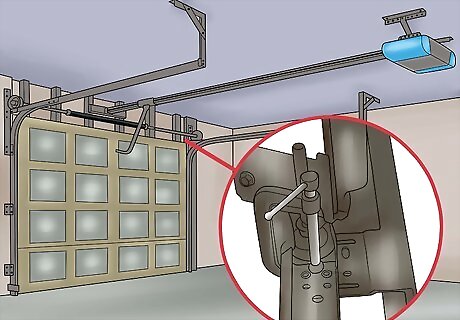
Secure the door. Place a C-clamp or a pair of locking pliers on the track of the garage door just above the bottom roller. This will prevent the door from popping open when you're adjusting the tension.
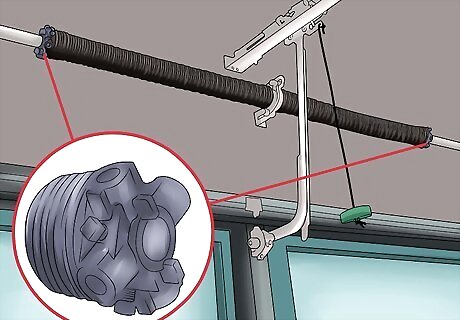
Locate the winding cone. From the stationary center plate, use your eye to follow the spring out to where it ends. At the end, there will be a winding cone keeping it in place. The cone will have four holes evenly spaced around it, plus two set screws that are used to lock the spring in place on the center shaft. To alter the tension on the spring, you will be adjusting the winding cone by inserting the winding bars into the holes and rotating the cone in one direction or the other.
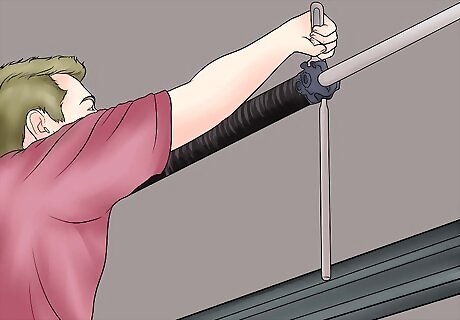
Loosen the set screws. Insert the winding cone or solid steel rod into the bottom hole on the winding collar. Hold the cone in place with the bar and loosen the screws. Check the shaft to see if there are any flattened or depressed areas where the screws are meant to be set. If so, make sure you replace the screws in these same flats when you are finished with your adjustment to ensure they hold more securely.
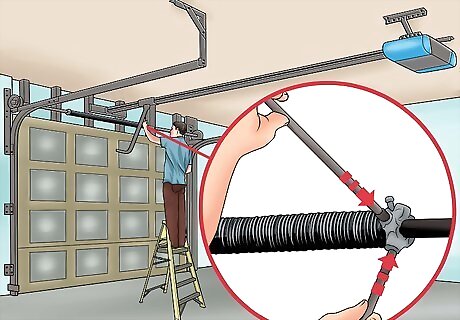
Prepare to adjust the tension. Insert the bars into two successive holes in the winding cone. Position yourself to the side of the bars so that your head and body are not in the way if the spring breaks. Always be ready to move quickly.
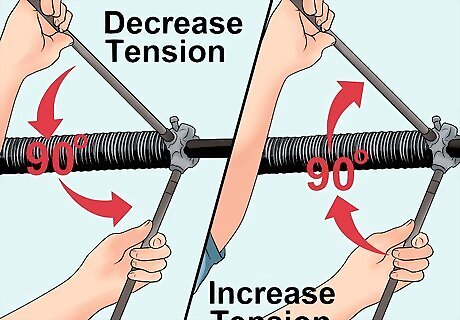
Adjust the tension. Make sure the bars are fully inserted, and manually rotate the cone in 1/4 increments. To determine a 1/4 turn, rotate the winding bars 90 degrees. To increase tension for a door that's difficult to open or closes too quickly, wind the cone up (in the same direction as the garage door cable goes through the pulley). To decrease tension for a door that isn't closing fully, is difficult to close, or opens too quickly, wind the cone down (in the opposite direction from how the garage door cable passes through the pulley). Unless you know exactly how much you need to adjust your door, go through all the steps and test the door. Repeat as necessary, working in 1/4 turns, until you achieve the proper tension.
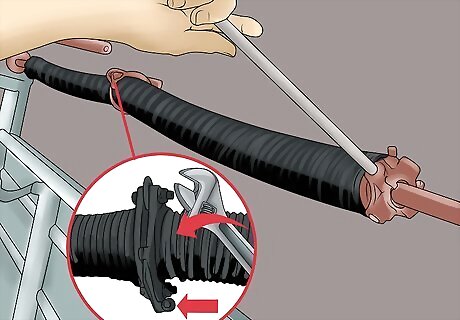
Stretch the spring. Keep the bottom-most winding bar in place and remove the second bar. Measure out 1/4 inch from the end of the winding cone (away from the center) and make a mark with a marker or piece of masking tape. With the bar still in the bottom hole, pull slightly up (toward the ceiling) on the bar and toward the center plate. As you do this: Continue holding the bar up and over and tap on it with the second bar. Tap it just below the winding cone. Tap it away from the center plate and toward the mark on the shaft. Tap the bar until you have stretched the spring to meet the mark on the shaft.
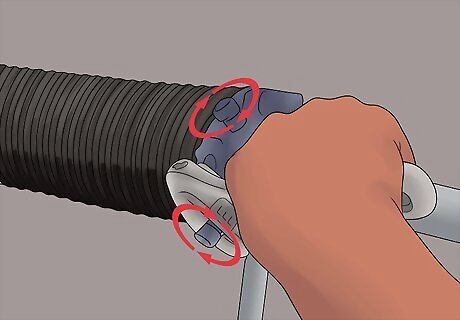
Tighten the set screws. Once you've stretched the spring out 1/4 inch, hold it in place with the one bar and lock it in place on the shaft by tightening the set screws. Make sure you replace the screws into their flats if there were any on the shaft.
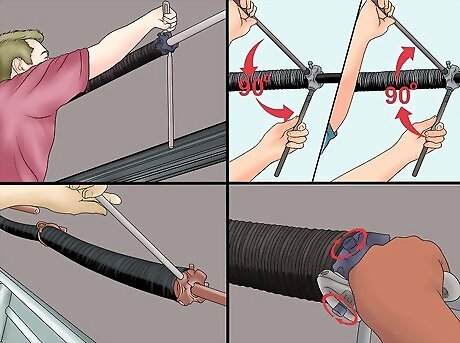
Repeat on the other side. Some torsion spring mechanisms have two springs (one on either side of the center plate), and if this is the case, repeat steps four to eight on the other spring. Torsion springs must be adjusted equally to ensure balance.
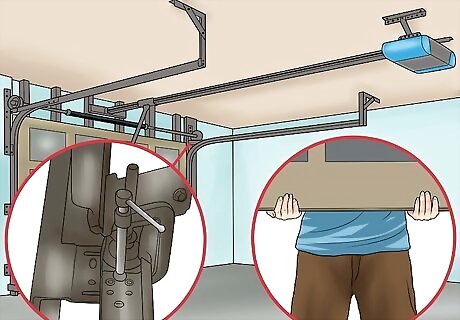
Test your door. Remove any clamps or pliers that are securing the door and test the door to see if you have adjusted the tension enough. If not, repeat steps four to ten until you have found the right tension to correct the problem you were having. Once your adjustments have been made, plug your opener back in if you have an automatic garage door.

Lubricate the springs. You should lubricate all springs, hinges, bearings, and metal rollers twice a year with a lithium- or silicone-based spray. Don't use WD-40.














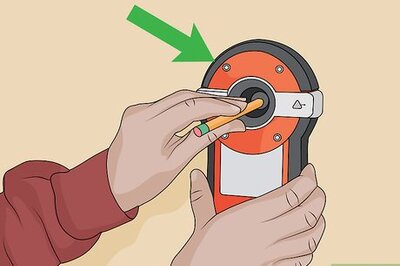




Comments
0 comment